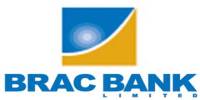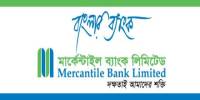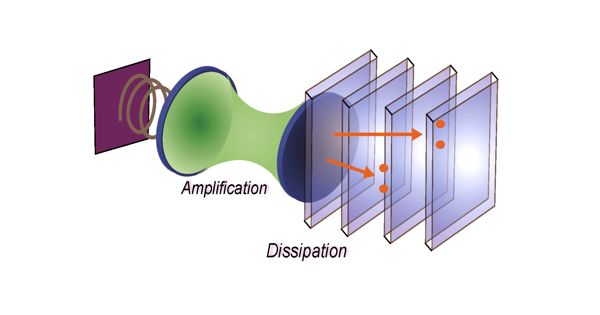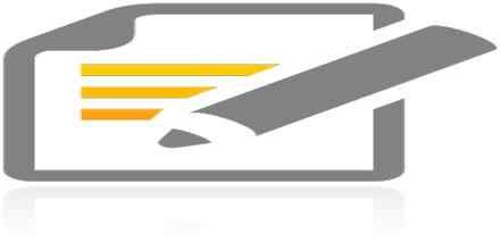Types of Clearing:
A) Outward Clearing: When the Branches of a Bank receive Cheque from its customers drawn on the other Banks within the local clearing zone for collection through Clearing House, it is Outward Clearing.
B) Inward Clearing: When the Banks receive Cheque drawn on them from other Banks in the Clearing House, it is Inward Clearing.
- Types of clearing house: There are three types of clearing house: Those are
1) Normal clearing house
2) Same day clearing house
3) Special Clearing House
Normal clearing house:
1) 1st house: 1st house normally stands at 10 a.m. to 11a.m
2) 2nd house: 2nd house normally stands after 3 p.m. and it is known as return house.
Same day clearing house:
1) 1st house: 1st house normally stands at 11 a.m. to 12 pm
2) 2nd house: 2nd house normally stands after 2 p.m. and it is known as return house.
Special clearinghouse:
3) 1st house : 1st house normally stands at 11 a.m. to 12 pm
3) 2nd house: 2nd house normally stands after 7 p.m. and it is known as return house.
(Special clearing generally held on yearly, half yearly closing of Bank and sometimes Eid-ul Fatr and Eid Ul Azha)
- Who will deposit cheque for Clearing: Only the regular customers i.e. who have Savings, Current, STD & Loan Account in the bank can deposit cheque for collection of fund through clearing house.
- Precaution at the time of Cheque receiving for Clearing, Collection of LBC, OBC & Transfer:
1) Name of the account holder same in the Cheque & deposit slip.
2) Amount in the Cheque & deposit slip must be same in words & in figure
3) Date in the Cheque may be on or before (but not more than six months back) clearing house date.
4) Bank & Branch name of the Cheque, its number & date in the Deposit slip.
5) Cheque must be signed.
6) Signature for confirmation of date, amount in words / in figure Cutting &
Mutilation of Cheque.
7) Cheque should be crossed (not for bearer Cheque).
8) Account number in the deposit slip must be clear.
9) Depositor’s signature in the deposit slip.
Cheque may be dishonored for any one of the following reasons:
1) Insufficient fund.
2) Amount in figure and word differs.
3) Cheque out of date/ post- dated.
4) Payment stopped by the drawer.
5) ………….Payee’s endorsement irregular / illegible / required.
6) Drawer’s signature differs / required.
7) Crossed Cheque to be presented through a bank.
8) Other specific reasons not mentioned above.
The dishonor Cheque entry in the Return Register & the party is informed about it. Party‘s signature required in the return register to deliver the dishonor Cheque. After duration, the return Cheque is sent to the party’s mailing address with Return Memo.
Responsibility of the concerned officer for the Clearing Cheque:
1) Crossing of the Cheque.
2) (Computer) posting of the Cheque.
3) Clearing seal & proper endorsement of the Cheque.
4) Separation of Cheque from deposit slip.
5) Sorting of Cheque 1st bank wise and then on branch wise.
6) Computer print 1st branch wise & then bank wise.
7) Preparation of 1st Clearing House computer validation sheet.
8) Examine computer validation sheet with the deposit slip to justify the computer posting
9) Copy of computer posting in the floppy disk.
Bills Collection:
In modern banking the mechanism has become complex as far as smooth transaction and safety is concerned. Customer does pay and receive bill from their counterpart as a result of transaction. Commercial bank’s duty is to collect bills on behalf of their customer.
Types of Bills for Collection
- Outward Bills for Collection (OBC).
- Inward Bills for Collection (IBC).
Outward Bill for collection OBC:
OBC means Outward Bills for Collection .OBC exists with different branches of different banks outside the local clearinghouse. Normally two types of OBC:
1) OBC with different branches of other banks out of clearing house.
2) OBC with different branches of the same bank.
Procedure of OBC:
1) Entry in the OBC register.
2) Put OBC number in the Cheque.
3) “Crossing seal” on the left corner have the Cheque & “payees account will be credited on realization “seal on the back of the Cheque with signature of the concerned officer.
4) Dispatch the OBC Cheque with forwarding.
5) Reserve the photocopy of the Cheque, carbon copy of the forwarding and deposit slip of the Cheque in the OBC file.
Inward bills for collection (IBC):
When the banks collect bills as an agent of the collecting branch, the system is known as IBC. In this case the bank will work as an agent of the collection bank. The branch receives a forwarding letter and the bill.
Procedure of IBC:
- IBC against OBC: To receive the OBC Cheque first we have to give entry in the IBC Register .The IBC number should put on the forwarding of the OBC with date.
- Deposit of OBC amount: OBC Cheque amount is put into the “sundry deposit-sundry Creditors account”, prepare debit & credit voucher of it. If the OBC Cheque is honored, send credit advice (IBCA) with signature & advice number of the concern branch for the OBC amount.
- If the OBC Cheque is dishonored, the concerned branch is informed about it.
- Again place in the clearing house or send the OBC Cheque with Return Memo to the issuing branch according to their information.
Accounts Section:
Accounts Department is called as the nerve Centre of the bank. In banking business, transactions are done every day and these transactions are to be recorded properly and systematically as the banks deal with the depositors’ money. . Improper recording of transactions will lead to the mismatch in the debit side and in the credit side. To avoid these mishaps, the bank provides a separate department; whose function is to check the mistakes in passing vouchers or wrong entries or fraud or forgery. This department is called as Accounts Department. If any discrepancy arises regarding any transaction this department report to the concerned department.
Besides these, the branch has to prepare some internal statements as well as some statutory statements, which are to be submitted to the Central Bank and the Head Office. This department prepares all these statements.
Workings of this department:
- Recording the transactions in the cashbook.
- Recording the transactions in general and subsidiary ledger.
- Preparing the daily position of the branch comprising of deposit and cash.
- Preparing the daily Statement of Affairs showing all the assets and liability of the branch as per General Ledger and Subsidiary Ledger separately.
- Making payment of all the expenses of the branch.
- Recordings inter branch fund transfer and providing accounting treatment in this regard.
- Preparing the monthly salary statements for the employees.
- Preparing the weekly position for the branch which is sent to the Head Office to maintain Cash Reserve Requirement (C.R.R)
- Preparing the monthly position for the branch, which is sent to the Head Office to maintain Statutory Liquidity Requirement (S.L.R)?
- Preparing the budget for the branch by fixing the target regarding profit and deposit so as to take necessary steps to generate and mobilize deposit.
- Checking of Transaction List
- Recording of the vouchers in the Voucher Register.
- Packing of the correct vouchers according to the debit voucher and the credit voucher.
Service Level & Customer Satisfaction
Service Level & Customer Satisfaction:
The Process of measuring the Satisfaction:
The satisfaction is an abstract task. The state of satisfaction of the Customers has been measured under some criteria. The criteria are given below.
- 1. The Bankers can understand and realize the Customers’ Problem properly and accurately.
- 2. The Bankers can solve the Customers’ Problem quickly and properly.
- 3. The Bankers are very friendly and helpful to the Customers
- 4. The Bank has wide spread Service Facility and Link
- 5. The Customers can receive the Services from very close to their House and Business Outlet.
- 6. The Phone Link has increased the Service Level of this Bank to great extent
- 7. How much the Customers are satisfied with the overall Service of the Bank
- 8. The Bankers provide Sufficient Information about their Product and Information necessary to the Customers
The respondents expressed their answer in a 5 point grading scale. Any point close to 5(five) indicates the higher satisfaction of the Customer about the criteria and any point close to 1(one) indicates the dissatisfaction of the Customer regarding the criteria.
A total of 25 respondents expressed their views. The maximum number under each criterion is 125 (25 x 5). The state of Service Level of the Bank in terms of the satisfaction of the Customers is expressed in the points—————-
- 1. Very Good Total Score ——- (115 to 125) (Out of 125)
- 2. Good Total Score ——- (115 to 125) (Out of 125)
- 3. Satisfactory Total Score ——- (115 to 125) (Out of 125)
- 4. Moderate/Average Total Score ——- (115 to 125) (Out of 125)
- 5. Poor Total Score ——- (115 to 125) (Out of 125)
So the Service Level of the Bank has been expressed in these 5(five) points.
These 5(five) points stands for some special meaning and explanation. The statements that stand with these points are given below.
- 1. Very Good:
The Service Level is very high quality. The Bank enjoyed a huge advantage in this regard. This will help the Bank to get more Customers and maintain a warm relation with them. The Bank is really getting benefit from this type of Service while maintaining the highly satisfaction from the Customers point of view. So it can be ranked as High-quality Service.
- 2. Good:
The Service is competitive in the Banking Business Market and is one of the strong points for the Bank. The Customers are satisfied in an acceptable way for the Service provided by the Bank. The Bank enjoys some advantage in this regard of the Service, which helps the Bank to create new Customers and maintain well relation with the existing ones.
- 3. Satisfactory:
The Bank is doing well in the regard of this Service. But it is not a strong point for the Bank. The Bank does not enjoy any advantage over other Banks in this regard. The Customers are satisfied but do not have much positive impression for this Service of the Bank. The Bank needs to improve the Level of this Service in order to gain comparative advantage to other Bank.
- 4. Moderate/Average:
The Service Level is very ordinary. It is considered as one of the vulnerable point of the Bank. The other Banks can easily enjoy superiority over this Bank in regard of this Service attract the attention of the Customers to their respective Banks. The Bank really needs to improve this regard as the Customers are not satisfied with the Service.
- 5. Poor
The Service is really worst and the Customers are quite dissatisfied in this regard. It is a real disadvantage and weak point for the Bank. In order to maintain the Customers loyalty to the Bank, the Bank needs to improve this Service with no delay. If the Bank fails to improve this sector, there is a great possibility that the Bank will loose a huge cluster of its present Customers and lag behind in the competitive market.
General Opinion of the Customers
Of the Banking Service provided by various Private Commercial Banks and Public Commercial Banks the Customers can distinguish some Unique Quality and Advantages for making and managing their Banking Relation with Bank. The Advantages that they feel while maintaining the Banking Relation with this Bank are as follows:
- 1. The Bank is more secured in terms of Banking Transaction and keeping Money here
- 2. The Bank has wide access and huge range of Service offerings
- 3. The Atmosphere of the Bank is more attractive than other Banks
- 4. The Bank can provide them prompt Service
- 5. The Bankers are very friendly to the Customers
- 6. Even the Banking Transaction through this Bank is reliable, trustworthy and smooth to various Organizations within the country or abroad.
According to the Customers there are also some short comings. They are:
- 1. The Bank takes high Charges for their Service in some areas of Banking Operations than that of the Nationalized Commercial Banks.
- 2. Even sometimes they are not aware of various Charges for the Products and Services provided by the Bank.
Comparative Analysis
Liquidity Ratio:
- a. Current Ratio
Year | RBL | PBL |
2008 | 0.89 | 0.88 |
2009 | 1.17 | 0.98 |
2010 | 1.11 | 1.07 |
Table: 14 Current Ratio
Source: Annual Report of RBL & Pubali Bank Limited (PBL) (2008, 2009, 2010)
Graphical Presentation:
Interpretation:
We know that, the current ratio measures a firm’s liquidity by measuring the portion of its current asset relative to its current liabilities and the higher the ratio, the higher the liquidity of the firm. The graph shows that, in 2008, current ratio of RBL and PBL were almost same but RBL current ration was better than PBL in 2009 and 2010 respectively 1.17 and 1.11. In 2010, RBL’s current ratio reduced at 1.11. So it can be said that, lower the current ratio, the lower the ability of the firm to pay its bills.
Activity Ratio
- a. Total Asset Turnover
Year | RBL | PBL |
2008 | 0.071 | 0.053 |
2009 | 0.083 | 0.066 |
2010 | 0.066 | 0.089 |
Table: 15 Total Asset Turnover
Source: Annual Report of RBL & PBL (2008, 2009, 2010)
Graphical Presentation:
Interpretation:
We know greater the total asset turnover; it is more efficient and 4 to 6 times is standard position. The graph shows that, the total asset turnover ratio of RBL was more than PBL in 2008 and 2009 but PBL has generated maximum level of turnover in year 2010 comparison with RBL It can be said that PBL was more efficiently use its assets to generate income.
Debt Ratio:
- a. Debt Ratio
Year | RBL | PBL |
2008 | 97.92% | 94.30% |
2009 | 96.36% | 97.72% |
2010 | 88.63% | 89% |
Table: 16 Debt Ratio
Source: Annual Report of RBL & PBL (2008, 2009, 2010)
Interpretation:
Every organization should give more emphasize on equity capital than debt capital. From the graph it has been that the RBL debt ratio was decreasing year by year. In case of PBL, its debt fluctuated over three years but in 2010 two banks’ debt ratio reduced from previous two years that means two banks took more steps on debt capital to reduce its risky.
Profitability Ratio:
- a. Net Profit Margin
Year | RBL | PBL |
2008 | 14.94% | 21% |
2009 | 23.04% | 19.62% |
2010 | 7.27% | 25.20% |
Table: 18 Net Profit Margin
Source: Annual Report of RBL & PBL (2008, 2009, 2010)
Interpretation:
The graph shows that, in 2010 net profit margin of RBL was so lower i.e. 7.27% but on the other hand PBL’s net profit margin was more than RBL i.e. 25.20% and over three years RBL and PBL’s net profit margin fluctuated. The higher the firm’s net profit margin, the better. So RBL should emphasis to increase its net profit margin.
- b. Return on Asset (ROA)
Year | RBL | PBL |
2008 | 0.46% | 1.54% |
2009 | 1.17% | 1.94% |
2010 | 1.15% | 2.44% |
Table: 19 Return on Asset (ROA)
Source: Annual Report of RBL & PBL (2008, 2009, 2010)
Interpretation:
After having a careful view on the graph, PBL had maximum return on asset than RBL over three years that means PBL remains more efficient to generate additional ROA than RBL. In 2009, RBL earned 1.17% on each taka of asset investment where PBL earned 1.94% on each taka. But in 2010 RBL’s return on asset silently decreased i.e. 1.15% than 2009 it is not a good sign for a bank, in this year PBL’s return on asset was 2.44%. So the higher the firm’s return on total assets, the better.
- c. Return on Equity (ROE)
Year | RBL | PBL |
2008 | 10.70% | 18.62% |
2009 | 29.89% | 22% |
2010 | 4.24% | 22.48% |
Table: 20 Return on Equity (ROE)
Source: Annual Report of RBL & PBL (2008, 2009, 2010)
Interpretation:
We know that the ROE means return earned from the owner’s investments. The graph shows that, RBL’s return on equity was fluctuating over three years. In 2009 RBL’s return on equity was in better than PBL at 29.89% but in 2010, RBL’s return was very poor on equity i.e. 4.24% where PBL earned more from the owner’s investments than RBL i.e. 22.48%. Generally, the higher this return, the better off is the owners.
- d. Investment to Deposit Ratio
Year | RBL | PBL |
2008 | 0.178 | 0.222 |
2009 | 0.196 | 0.186 |
2010 | 0.175 | 0.167 |
Table: 21 Investment to Deposit Ratio
Source: Annual Report of RBL & PBL (2008, 2009, 2010)
Interpretation:
As we know that the ratio measures the bank’s efficiency in promoting its investment products the customer and in using its funds collected from the customers to by measuring the percentage of total deposit that the bank has disbursed as loan and advances and the higher the ratio the higher the banks efficiency and vice-versa. The graph shows that, RBL’s investment remained in better position than PBL last two years that means RBL increased its deposit investment. It is a good sign.
- e. Earning Per Share (EPS) (Assume face value 100tk per share)
Year | RBL | PBL |
2008 | 69.93(tk.) | 350(tk.) |
2009 | 133.48 | 42.1 |
2010 | 48.02 | 65.1 |
Table: 22 Earning Per Share (EPS)
Source: Annual Report of RBL & PBL (2008, 2009, 2010)
Interpretation:
As we noted earlier, the number of taka earned during the period on behalf of each outstanding share of common stock. From this graph it has been that, RBL’s earning per share was in better position then PBL in 2009 but in 2010 RBL’s earning per share decreased more than 2009 which is not a good sign where PBL’s earning per share increased. Comparison between two banks it can see that RBL and PBL’s earning per share were fluctuating over three years.
Major Findings
Major Findings
From the analysis it has seen that Rupali Bank Ltd (RBL) Financial performance was not better than other bank such as Pubali Bank Ltd. (PBL) except in some cases.
From the current ratio analysis it has seen that in last two years RBL had enough current assets to pay its short term obligations. But in 2010 the current ratio was decreased silently than 2009.
Form the net working capital analysis it can be seen that in 2009 and 2010 RBL’s had enough working capital to meet up its current obligations but in 2010 its net working capital went down amount than 2009 that is bad sign for RBL.
From the trend analysis it has seen that RBL’s total asset turnover was fluctuating year by year. But in 2010 total asset turnover was lower than previous three years. It indicates Negative operating efficiency of RBL.
Debt Ratio RBL was in satisfactory range because in 2010 it was decreased more than last three years.
From the trend analysis RBL’s operating profit margin was increasing year by year. It is a good sign for the bank.
From the trend analysis it have seen that RBL’s net profit margin was increasing except 2010 because in 2010 bank’s net profit margin was reduced more from previous three years. It indicates negative operating result of RBL.
In 2010 the investment to deposit of the RBL decreased from previous three years. This is not a good sign for the bank.
From the analysis it has been that RBL’s earning per share was not in better than PBL except 2009 which indicates not better earnings for the bank. The P/E ratio of RBL was more than the industry average because bank’s P/E was 36 times while industry average is approximately 10 times.
RBL’s time interest ratio was not satisfactory because in 2010 bank had only 1.60 tk. earning against 1 taka interest obligation which was not good. But from trend analysis it has seen that RBL’s interest payment ability was increasing year by year.
The RBL’s return on asset (ROA) was increasing from 2007 to 2009 but last year bank’s ROA decreased silently which is not good sign on the other hand PBL was more efficient to generate additional return on asset than RBL.
Return on equity (ROE) was also fluctuating over four years but on an average PBL had better position from RBL.
Conclusion And Recommendations
onclusion:
The Banking sector in any country plays an important role in economic activities. Bangladesh is no exception of that. As because it’s financial development and economic development are closely related. That is why the private commercial banks are playing significant role in this regard.
From the practical implementation of customer dealing procedure during the whole period of my practical orientation in Rupali Bank Ltd. I have reached a firm and concrete conclusion in a very confident way. I believe that my realization will be in harmony with most of the banking thinkers. It is quite evident that to build up an effective and efficient banking system to the highest desire level computerized transaction is a must.
This report focused and analyzed on General banking department of Rupali Bank ltd, Pollobi Branch. Rupali Bank ltd a popular bank in Bangladesh but its contribution in socioeconomic prospect of Bangladesh has the greater significance.
JBL is attaining offer of special deposit scheme with higher benefits, which is a crying need for long-term position in financial market. Because of the entrance of more banks in the financial market, deposits will splits over. Therefore, it is high time to hold some permanent customers by offering special deposit scheme otherwise in future amount of deposit may come down. To strengthen the future prospect of branch, it is an emergency to collect more deposits.
Recommendations:
- Banking is a service-oriented marketing. Its business profit depends on its service quality. That’s why the authority always should be aware about their service quality.
- To provide quality service to the customer it is necessary to have a trained team of an organization or an institution. For this reason the bank should recruit more fresh, bright and energetic persons such as MBA, BBA, and MBM etc.
- As soon as possible the bank should start more branches in Dhaka city as well as the other cities of the country.
- RBL is offering very medium interest rate of FDR, where as others banks are giving high interest rate than RBL. For this RBL is loosing their customers. So RBL should increase their rate of interest for FDR.
- Now a day’s world is going very fast. Now, most of the banks open online customer service system. Though, Already has introduced on line banking system, but it has problem every day i.e. Jam, slow, Hanging etc. It may be developed on line banking for quick service and customer’s satisfaction.
- In general banking department it is necessary to implement modern banking process instead of traditional system. It should be more computerized.
- Account opening form could be more elaborated easily understandable.
- Evening Banking should be introduced to extend service hour for customer’s
Flexibility.
- One of the business strategies is promotion. Successful business depends how they can promote their products or services to the customer. In this connection to improve the business status bank should introduce more promotional programs.
- The recruitment process of the bank is very lengthy and expensive. The bank should the cost and select the employee by restructuring the lengthy process.
- As the clients are not in favor of introducing system, if possible the rule of introducing to open an account should be changed. Because many people are facing problem to arrange an introducer in the time of opening accounts
- In addition with the present services they should include more services. It is badly needed to provide more services to the customer in order to compete in the market.
- To make exchange process more prompt the authority should use modern communication system such as e-mail, fax, win fax, internet etc
BIBLIOGRAPHY
Books:
Chandra Pachanna: Project Management.
Kothary C.R. : Research Methodology
Kapoor V.K. : “General Banking Management” and Sons, New Delhi, India. (1999)
Panday I.M.-Financial Management (8th Edition). Vikas publication house pvt. Ltd. New Delhi, India.
Shekhar K.C : Banking Theory and Practice.
Documents:
1) Annual Report of Rupali Bank Ltd 2010.
2) Annual Statement of affairs of the branch 2006-2010.
3) Various official records.
Abbreviations
Bangladesh Bank BB
Cash Credit CC
Credit Information Bureau CIB
Consumer Credit Scheme CCS
Credit Risk grading CRG
Credit Risk Management CRM
Electronic Fund Transfer EFT
Financial Spread Sheet FSS
Fixed Deposit Receipt FDR
Head Office HO
International Accounting Standard IAS
Industrial Credit Division ICD
Information Communication Technology ICT
Rupali Bank Ltd. RBL
Letter of Credit L/C
Loan against Trust Report LTR
Some are parts:
General Banking Service Level and Customer Satisfaction of Rupali Bank Limited (Part 1)
General Banking Service Level and Customer Satisfaction of Rupali Bank Limited (Part 2)
















